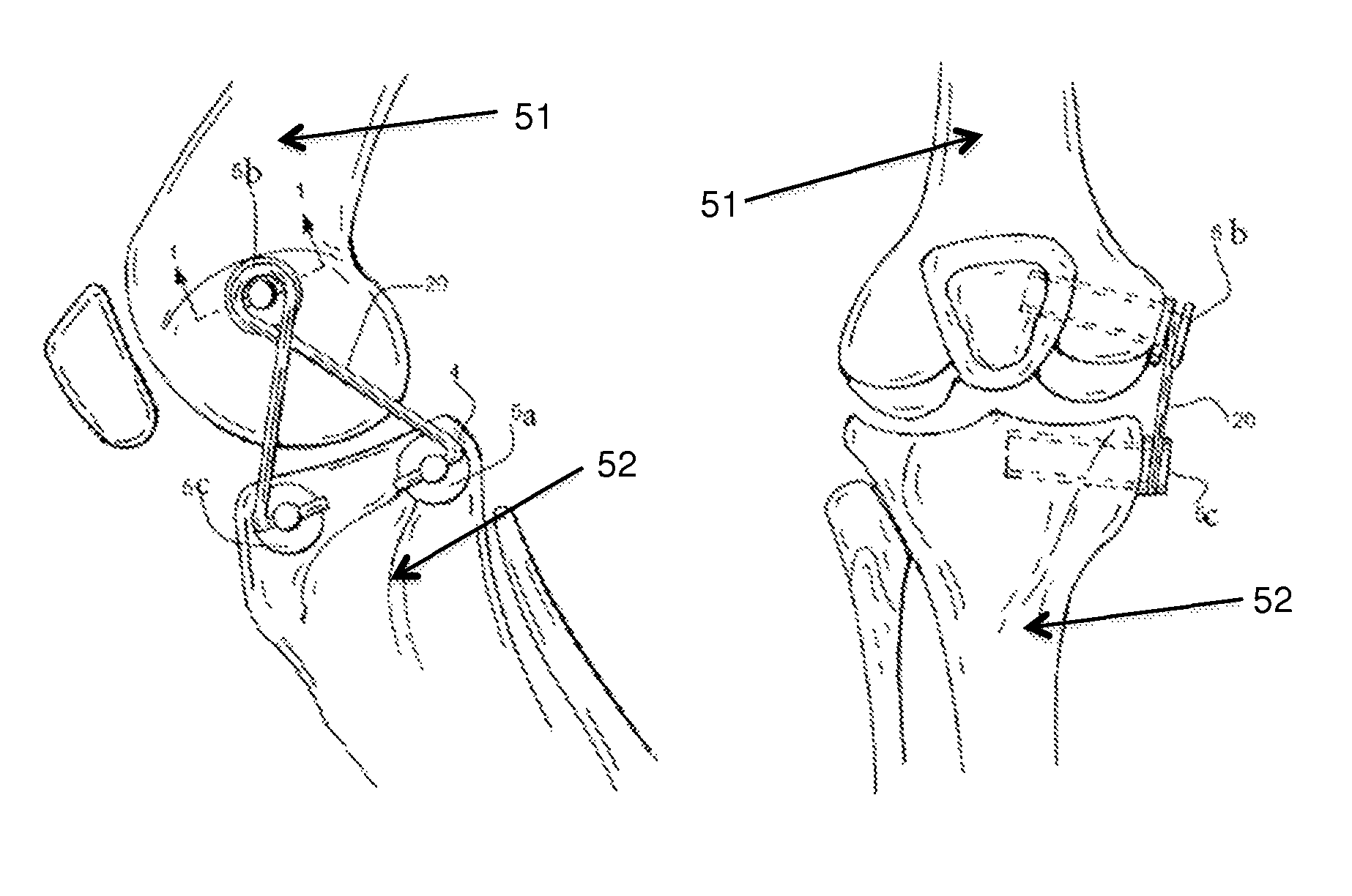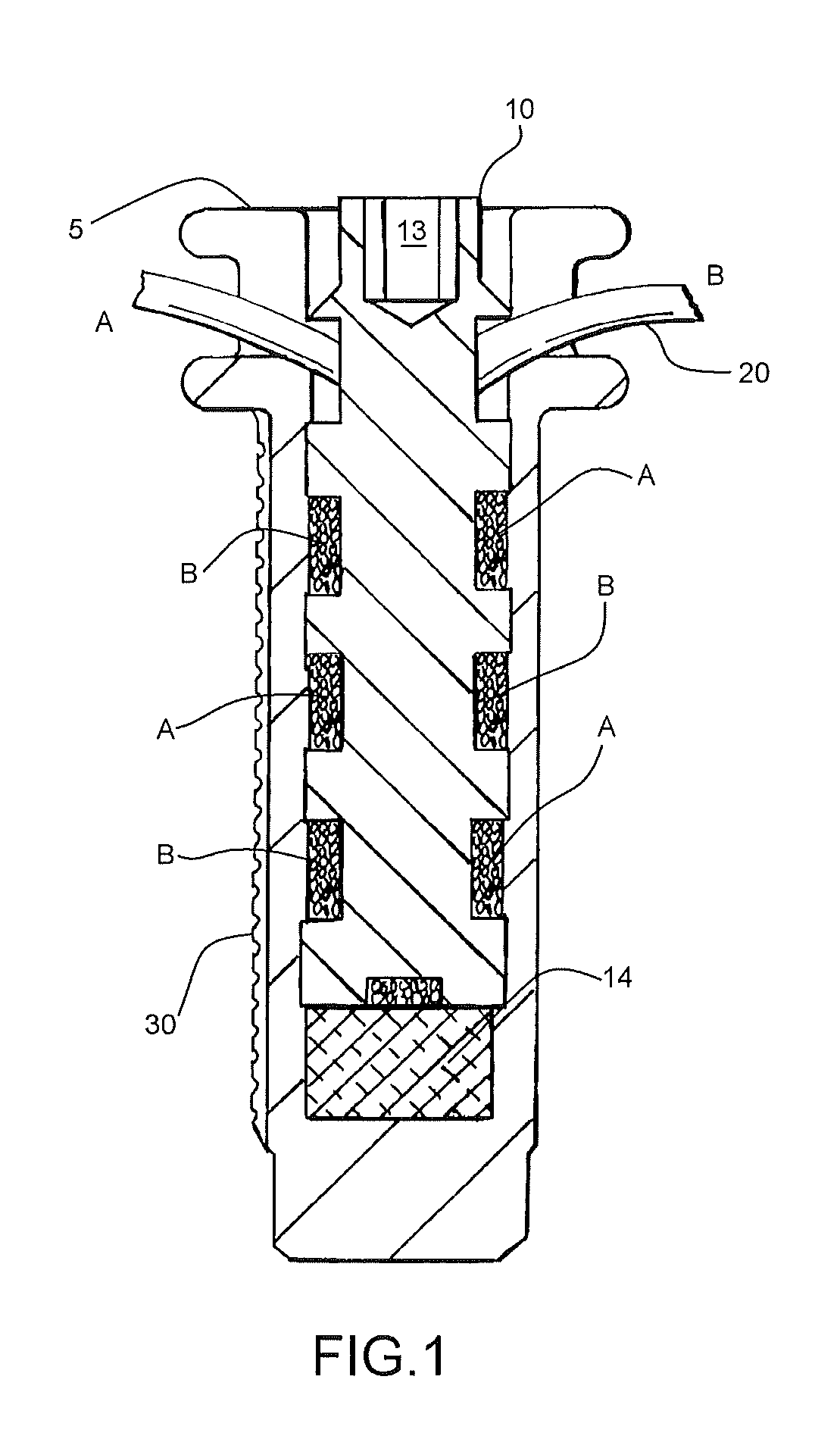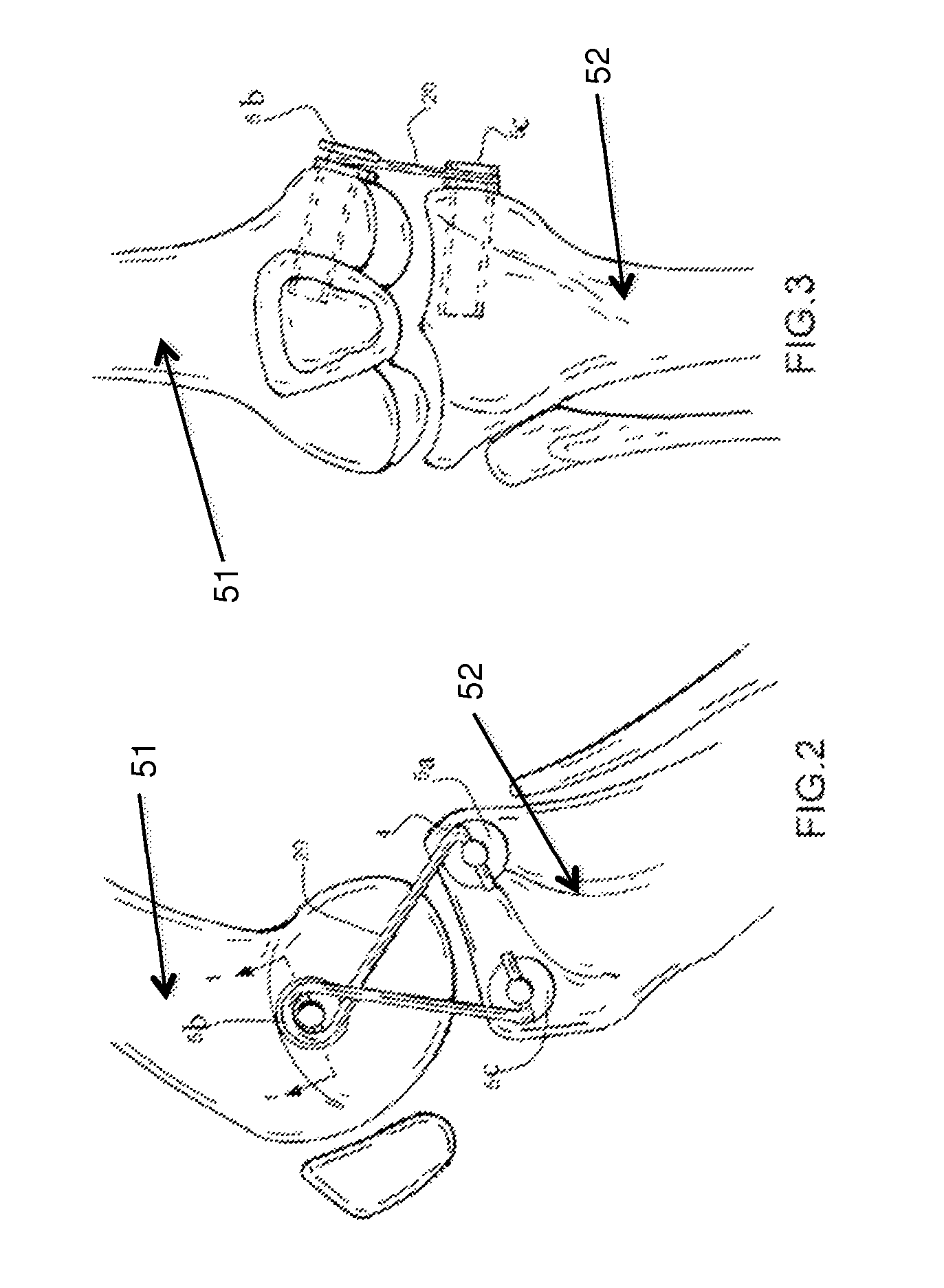Internal joint bracing system and suture anchoring assembly therefore
a bracing system and internal joint technology, applied in the field of internal joint bracing system, can solve the problems of ineffective control and stability, pain and dysfunction, early progressive joint wear, etc., and achieve the effects of limiting pathologic joint motion and internal slippage, high stress, and substantial control of unstable human joints
- Summary
- Abstract
- Description
- Claims
- Application Information
AI Technical Summary
Benefits of technology
Problems solved by technology
Method used
Image
Examples
Embodiment Construction
[0027]The invention will now be more specifically described with reference to the aforementioned FIGS. 1-10.
[0028]In accordance with an embodiment of the present invention a novel anchor assembly 1 is securely anchored to bone to attach a synthetic or biologic tether or suture 20. (Tether and suture are used interchangably herein to refer to the material attached to the bone anchor assembly for forming an internal bracing system according to an embodiment of the present invention.) The anchor assembly 1 includes an anchor member 5 and a central set screw 10. The anchor member 5 and set screw 10 are made from biocompatible, high strength materials. Details of the anchor member 5 are illustrated in FIGS. 4-9. Details of the central set screw 10 are illustrated in FIG. 10. The tether 20 is connected to the anchor assembly 1 through interaction of the anchor member 5 and the set screw 10. The attachment of the tether 20 allows dynamic movement of the tether 20 without high risk of failu...
PUM
 Login to View More
Login to View More Abstract
Description
Claims
Application Information
 Login to View More
Login to View More - R&D
- Intellectual Property
- Life Sciences
- Materials
- Tech Scout
- Unparalleled Data Quality
- Higher Quality Content
- 60% Fewer Hallucinations
Browse by: Latest US Patents, China's latest patents, Technical Efficacy Thesaurus, Application Domain, Technology Topic, Popular Technical Reports.
© 2025 PatSnap. All rights reserved.Legal|Privacy policy|Modern Slavery Act Transparency Statement|Sitemap|About US| Contact US: help@patsnap.com



